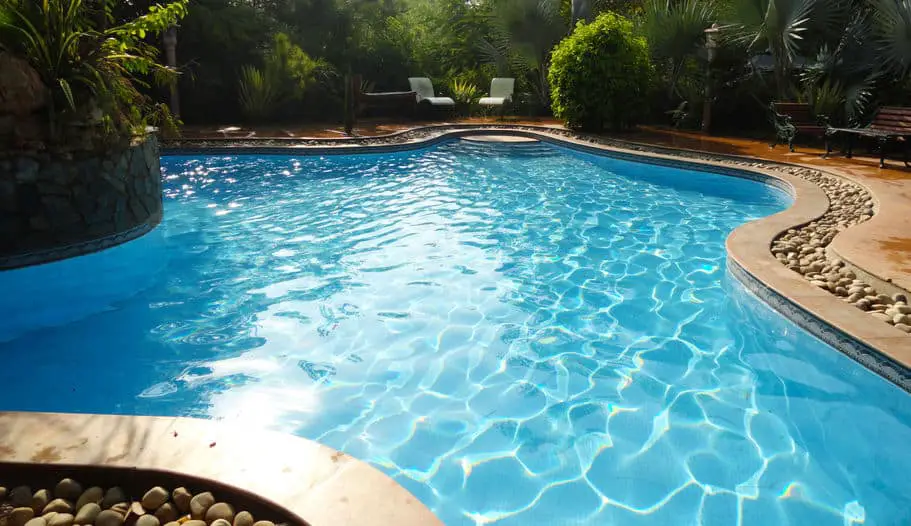Yes, saltwater pools are chlorinated pools. Some people think that saltwater pool = no chlorine but that’s not even close to being true. The chlorinator systems in a saltwater pool produces chlorine so you don’t have to manually add it to the water but there are times that a saltwater pool additionally needs chemical chlorine manually added. (This link explains why).
Since chlorine isn’t cheap, it’s therefore important that saltwater pool owners use it as efficiently as possible.
In this blog post, we will discuss some tips and tricks for maximizing chlorine efficiency in your saltwater pool.
- Check Your Salt Levels Regularly
The first step to maximizing chlorine efficiency in your saltwater pool is to ensure that the salt levels are within the recommended range. Salt levels that are too low can cause the chlorine generator to work harder than necessary, reducing its lifespan and effectiveness. On the other hand, if salt levels are too high, they can corrode your pool’s equipment and cause skin and eye irritation.
It is recommended to test your salt levels at least once a month, or after heavy rainfall, to ensure the levels are between 2,500-3,500 ppm (parts per million). You can use a saltwater test kit or take a sample of your pool water to a pool supply store for testing.
- Maintain Proper Water Chemistry
Along with salt levels, it is essential to maintain proper water chemistry to maximize chlorine efficiency. Your pool’s pH level should be between 7.2-7.8. Anything outside this range can cause the chlorine to become less effective, leading to algae growth and other water quality issues.
Additionally, you should keep an eye on your pool’s total alkalinity (TA) and calcium hardness levels. TA levels should be between 80-120 ppm, while calcium hardness should be between 200-400 ppm. High TA and calcium hardness levels can also affect chlorine efficiency, leading to cloudy water and scaling.
Keep your chlorinator at a setting that keeps you well within the range of acceptable chlorine for a saltwater pool which is 1 ppm – 3 ppm. This will help to ensure you don’t have to manually add chlorine to the pool during hot sunny days and heavy pool usage which adds to your costs.
- Clean Your Salt Cell Regularly
Your pool’s salt cell is responsible for generating chlorine from the salt in the water. Over time, the salt cell can become coated with calcium and other minerals, reducing its effectiveness. To prevent this buildup, it is recommended to clean your salt cell every three to six months or as needed. Follow the instructions of your salt cell manufacturer first and foremost.
To clean your salt cell, first, turn off the power to the chlorine generator. Then, remove the cell and rinse it with a high-pressure hose. Next, soak the cell in a solution of muriatic acid and water for 15-20 minutes. Finally, rinse the cell again and reassemble it.
And if this sounds like too much work, look for a chlorinator with a reverse polarity feature which will clean the salt cell automatically! No work required for you.
- Shock Your Pool as Needed
Even with regular maintenance, your pool may still develop algae or other contaminants. When this happens, it’s essential to shock your pool to kill off the contaminants and restore proper water chemistry.
When shocking your pool, be sure to follow the manufacturer’s instructions for your specific chlorine generator. In general, you should add enough shock to increase the chlorine levels to 10 ppm or higher. It is also recommended to shock your pool at night or when the sun is not shining directly on the water to prevent chlorine loss due to UV rays.
Final thoughts
A saltwater pool can be a great choice as far pool type goes, providing a low-maintenance alternative to traditional chemically chlorinated pools. However, to maximize chlorine efficiency and keep your pool clean and safe for swimming, regular maintenance is still required. By checking your salt levels, maintaining proper water chemistry, cleaning your salt cell, and shocking your pool as needed, you can enjoy your saltwater pool all season long.
You will also help to ensure you aren’t spending too much money on chlorine and other chemicals given the high cost over time.

